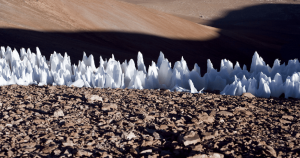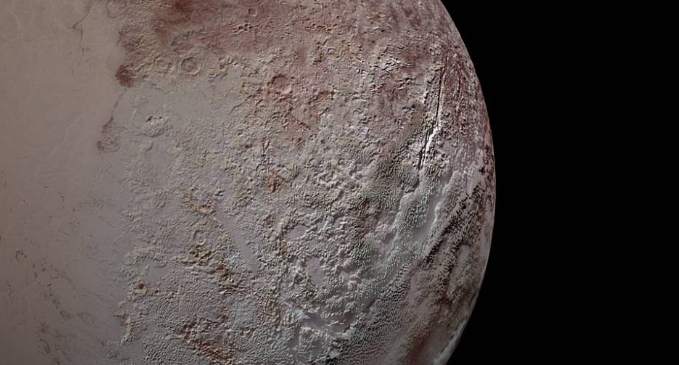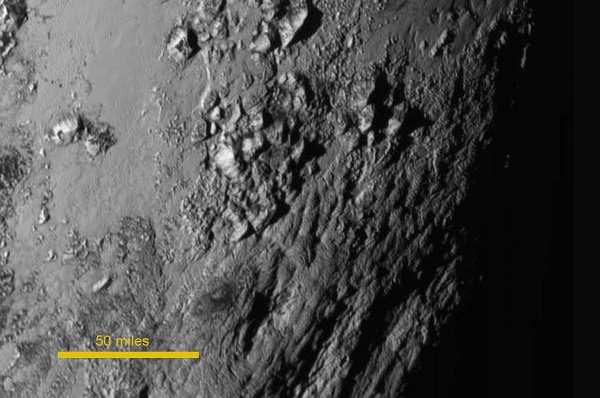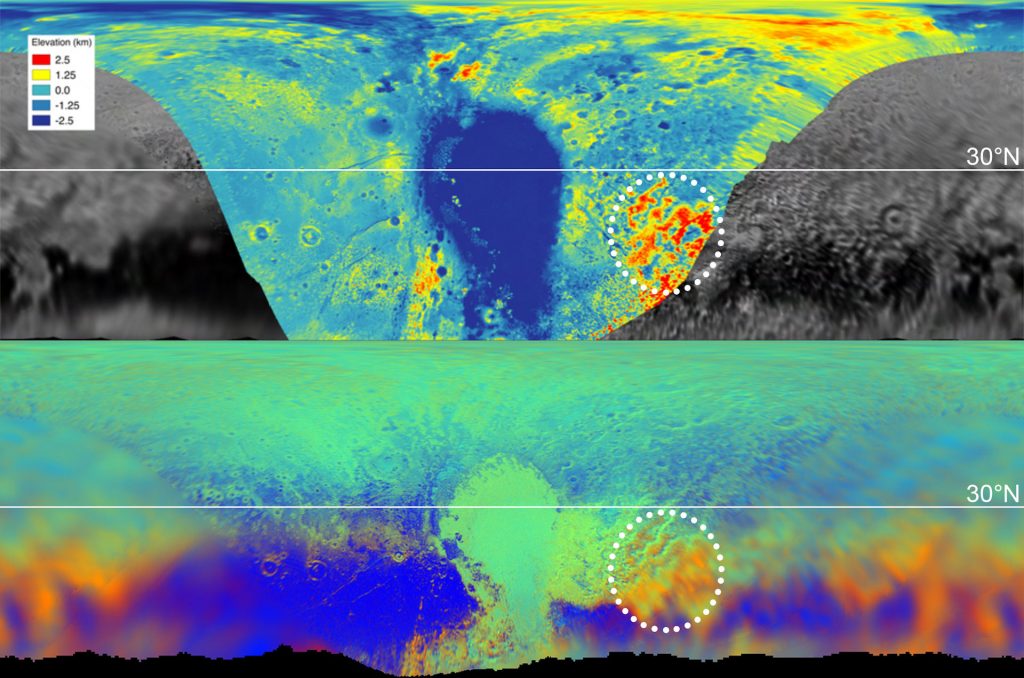
NASA Scientists Decodes Mystery Of Pluto’s Ice Bladed Terrain
Pluto, known as the smallest and coldest planet in our solar system came into limelight in July 2015 through NASA’s New Horizons’ Pluto flyby. Sketching the little planet’s geology and composition, with details about the unexpected vapor in the planet’s atmosphere and its interaction with the solar winds, New Horizons has developed scientists’ and the world’s understanding of Pluto.

During the New Horizons mission, NASA managed to take the first look at the surface of our favorite dwarf planet, Pluto. The mission revealed some peculiar formations near the planet’s equator, namely some sharp crests and blades of ice. Scientists have been wondering how these formations came into being, and they finally managed to find an answer.
Pluto’s surface hosts blades of ice that soar to the height of skyscrapers and researchers have narrowed down exactly how the dramatic features form. According to new research, the blades are made mostly of methane ice and form similarly to (much shorter) spikes of snow and ice on Earth.

Shedding light on mysterious formations resembling giant knife blades of ice on Pluto, scientists have found that the “bladed terrain” is made almost entirely of methane ice, and likely formed as a specific kind of erosion wore away the surfaces, leaving dramatic crests and sharp divides.
According to NASA, these jagged geological ridges are found at the highest altitudes on Pluto’s surface, near its equator, and can soar many hundreds of feet into the sky as high as a New York City skyscraper. They are one of the most puzzling feature types on Pluto, and it now appears the blades are related to Pluto’s complex climate and geological history.

The blades are related to Pluto’s complex climate and geological history, according to the study published in the journal Icarus. A team led by New Horizons team member Jeffrey Moore, a research scientist at NASA’s Ames Research Center in California’s Silicon Valley, determined that formation of the bladed terrain begins with methane freezing out of the atmosphere at extreme altitudes on Pluto, in the same way, frost freezes on the ground on Earth, or even in your freezer.
“When we realized that bladed terrain consists of tall deposits of methane ice, we asked ourselves why it forms all of these ridges, as opposed to just being big blobs of ice on the ground,” said Moore. “It turns out that Pluto undergoes climate variation and sometimes when Pluto is a little warmer, the methane ice begins to basically ‘evaporate’ away.”
Watch The Video Here:
Scientists use the term “sublimation” for this process where ice transforms directly into the gas, skipping over the intermediate liquid form. This discovery pretty much establishes the fact that the surface and air of Pluto are apparently far more dynamic than previously thought. The results have just been published in Icarus, an international journal of planetary science.
Also Read: The Lost Continent ‘Zealandia’ Was Not Always Submerged! Says Study